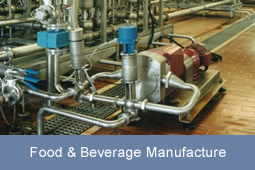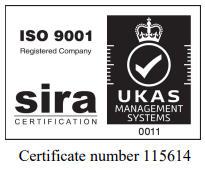Pollution Risk
Hard standing areas across the site often generate significant surface water run-off which is typically discharged to a local water course. Finished product, waste and fuel ingress in to the site drainage system can affect surface water quality. Continuous measurement may be used to identify pollution events. When linked to control systems, these systems may avert the accidental discharge of pollution. Instrument such as the Protoc Total Organic Carbon (TOC) analyser can be used to identify ingress of organic contamination within surface water drainage systems and control abatement systems.
Storm Water
Although often considered as "clean", surface water derived from hard standing areas is particularly at risk from pollution. Chemical manufacturers, engineering companies and international airports have installed continuous monitors to detect, divert or contain spillages and contaminated surface water. Total Organic Carbon, Oil on water and pH are often key measurement parameters.
Dissolved Organic Chemicals (TOC)
Total Organic Carbon (TOC) measurement has been widely used to determine the presence of dissolved organic substances. For example, international and military airports use Ethylene Glycol to de-ice aircraft and runways. The surplus is washed into the drainage system by melt-water and rainfall. The Protoc® Total Organic Carbon (TOC) analyser has been installed to continuously monitor for contaminated surface water (which can be diverted for treatment), protecting local water courses from polluted discharge. The Protoc® TOC analyser technology with sample preparation, may be pre-installed within frost protected walk-in analyser kiosks. If the kiosks are positioned airside, then they are supplied with a two-colour (BS4800 range) stripped finish, to make them highly visible.
Oil on Water
Oil is also a common pollutant. Many industries have stringent discharge consents imposed often stipulating "no visible traces". Although abatement systems may be in place (e.g. oily water separators), it is important to identify spillages at source and monitor discharges to show compliance with imposed regulations. Oil on water detection using a non-contact laser measurement technology, can be installed to alarm the presence of oil at approximately 1 micron thickness or at the visible trace threshold.
Other Parameters
Other parameters, which are often used to indicate pollution, are pH, Turbidity and Conductivity. In some instances, UV absorption (254nm) may also be a useful indicator of organic pollution and oil in water which may be determined by a UV-fluorescence technique.
Communications and Control
One or more continuous measuring devices may be integrated with a spill control system such as the Terminator, to arrest or re-circulate flows and prevent discharge of pollution to rivers. Real-time event notification is also possible. Alarm outputs from the continuous measuring device may be connected to an existing telemetry system, to an audible siren or a visual beacon. Alternatively, GSM communication technology can be used to send email notification and collect measurement data for remote access.
More information? Get in touch!
If you would like more information relating to this product or the services Pollution PPM can provide, please Contact Us.
For International enquiries, please contact one of our dealers listed on the following page - International Dealers





















